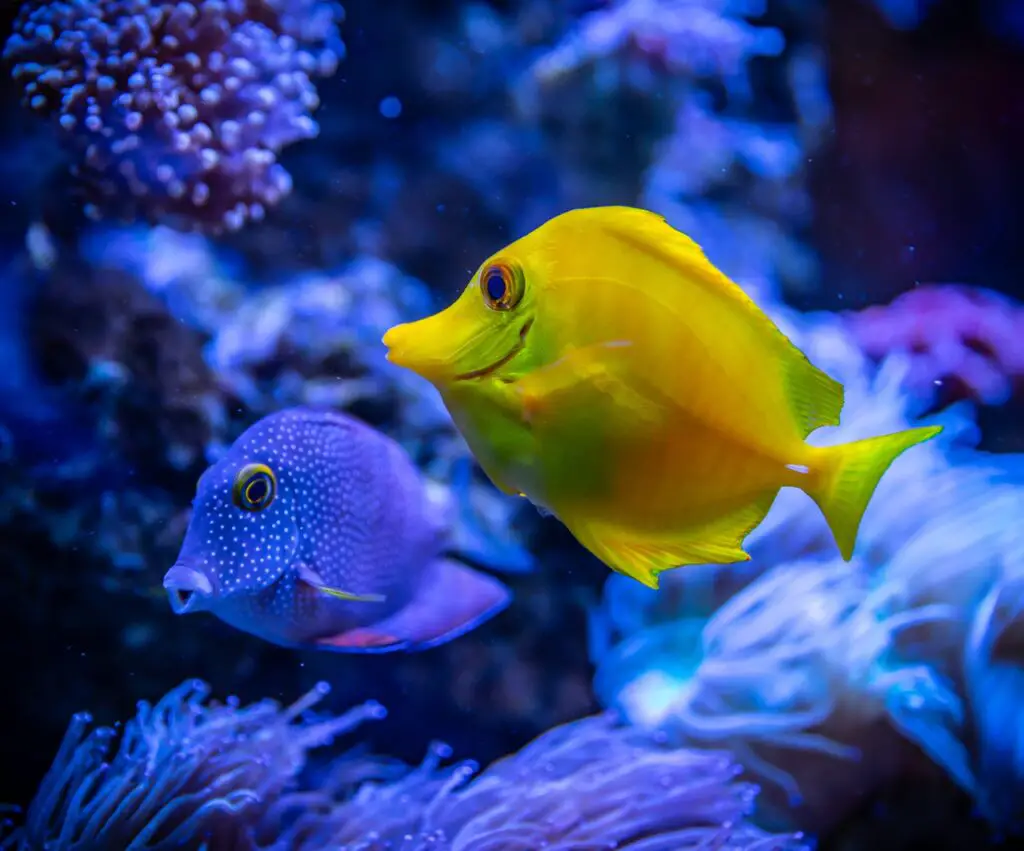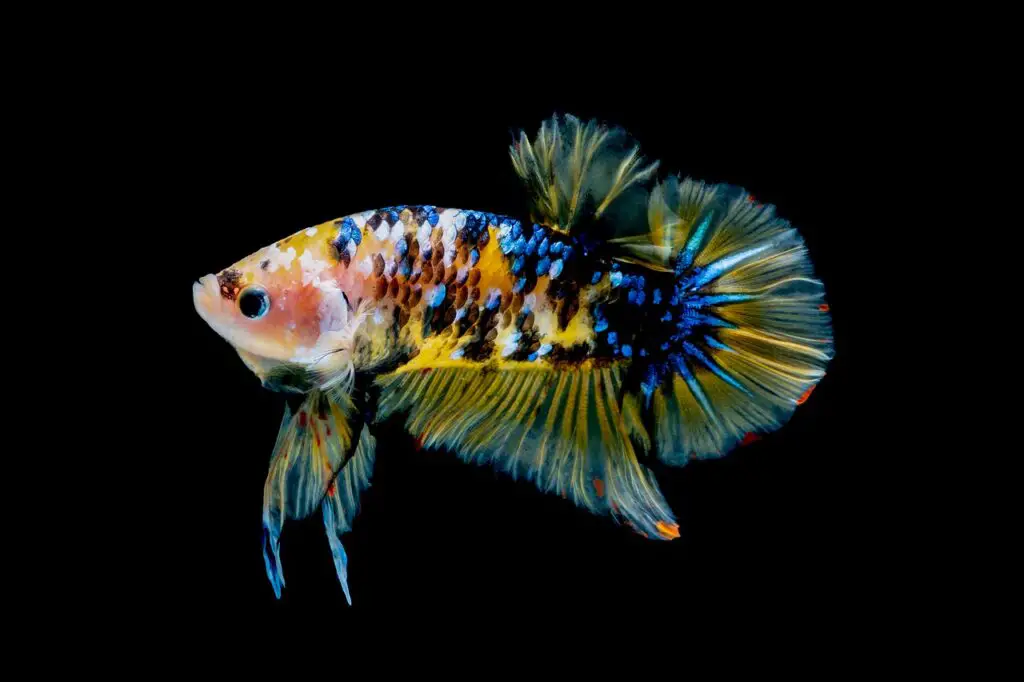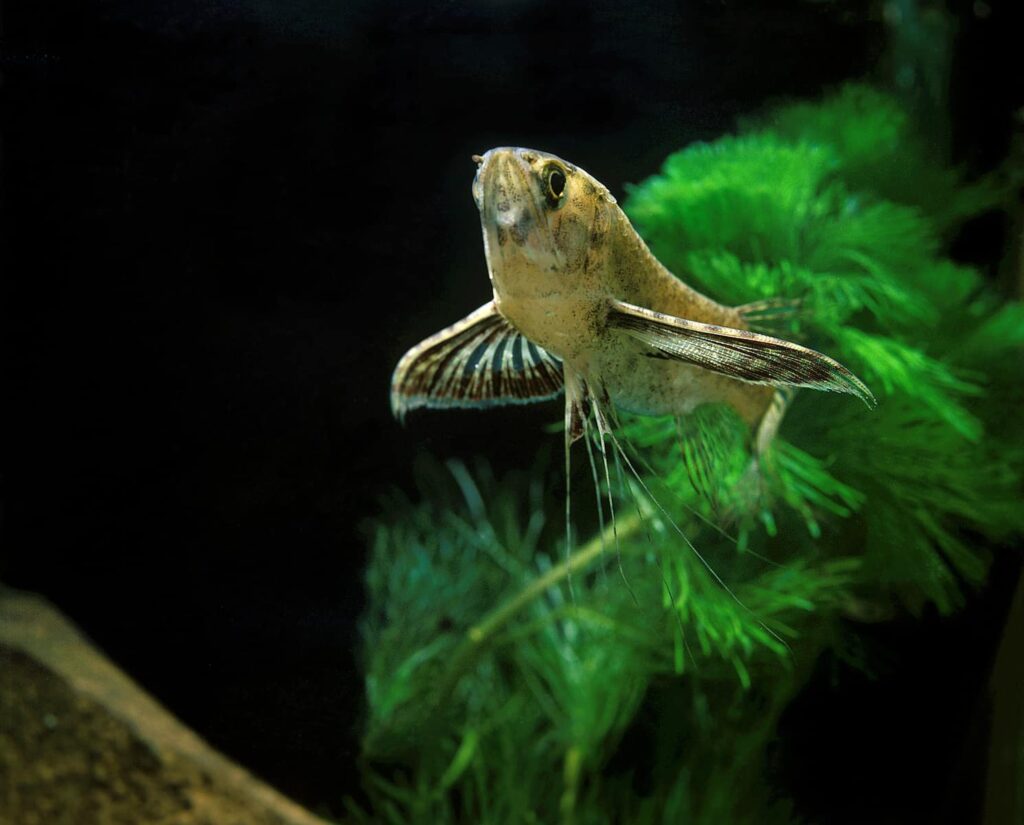Are you looking for bright, colourful fish to host in your own aquarium? You don’t always need a saltwater tank to make the most of some of the ocean’s best and brightest species. In this guide, we’re going to look at some of the coolest freshwater aquarium fish you can add to your tank.
Here are five top picks for fish that will add a touch of colour and charm to your tank and home – and which are also super easy to look after!
Discus Fish (Symphysodon – Cichlidae Family)
The Discus (Symphysodon) is one of the brightest, most colourful freshwater fish you can take home. They are truly stunning – in fact, one of the main reasons why this species is so popular is for the fact that there are so many different variations! They can also grow to an impressive size, meaning that if you are serious about stocking your tank with the coolest freshwater aquarium fish, you had better make sure that you have plenty of space.
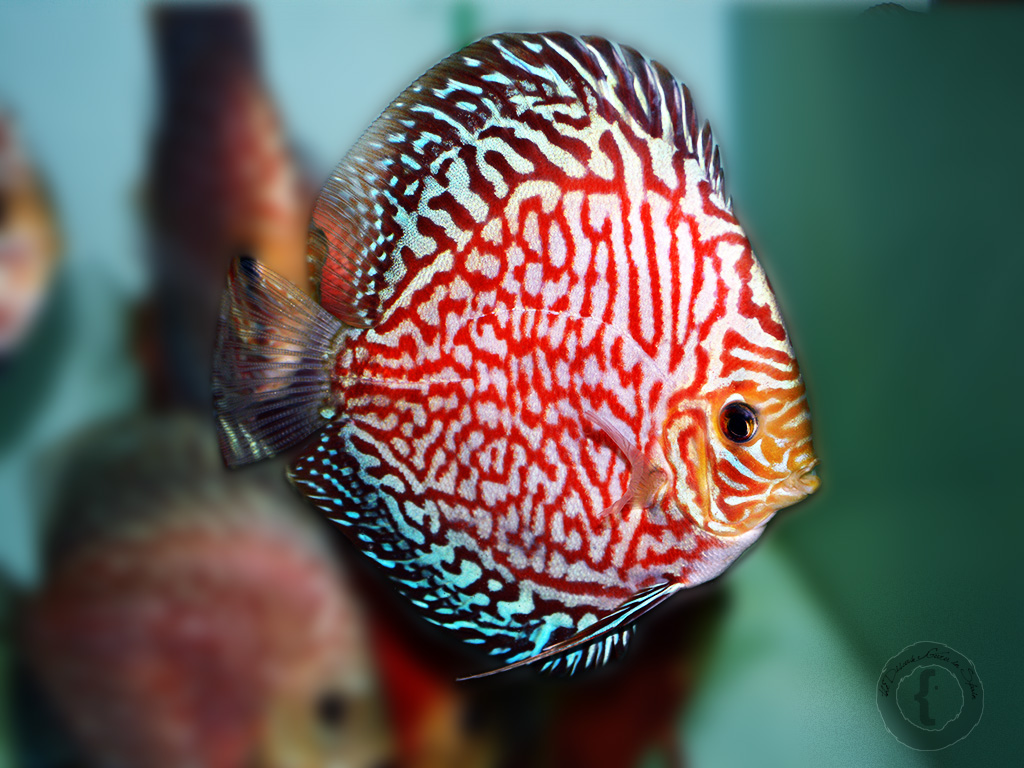
They are round-bodied and are generally green, red, blue, and yellow, but their various patterns and marks really can vary. You may well have spotted a few of these in various nature documentaries over the years, or even in local aquariums near you!
These fish generally originate from South America. In fact, they are a common sight in the Amazon river! Even so, their selective breeding has continued all over the world, with Discus becoming particularly popular across Asia. In fact, some colours of these fish can be quite hard to come by, making them very sought-after.
These fish tend to look bold and bright, but they can actually be fairly timid and quiet. However, this can change depending on their environment, and whether or not they are under any stress. What’s worth remembering is that if you have other Cichlidae in the tank, there will be a competition – meaning that your discus could well end up preying on smaller critters.
Discus fish are pretty sensitive on the whole, which means they do not cope well with stress. Therefore, it can sometimes be tricky to make sure you have your tank set out perfectly for them. These fish are also fairly sensitive when it comes to water pH as well as diet, meaning it’s worth making sure you prepare a tank properly for them.
- Fish Lifespan: Up to 10 Years
- Tank Size: At least 75 gallons
- Water Temperature: Between 82 and 85 F
- pH: Between 6.0 and 7.0 generally
- Hardness: Between 1 and 4 dKH generally
- Compatibility: Can be aggressive but generally mild-mannered
- Fish Size: Can grow up to 10 inches long
Betta (Betta Splendens)
The Betta fish is amazingly colourful and sure to be a dynamic addition to your freshwater tank. As one of the coolest freshwater aquarium fish, the betta looks fantastic but will need plenty of special care if you really want to make the most of them. They might also be known as Siamese Fighting Fish depending on where you get them from!

Bettas are fairly small and colourful fish with incredible plumage, likely to catch your eye as they drift and sail through the water. These fins are actually fairly common to domesticated betta, as in the wild, they tend to look a little more demure. That’s why you’ll still find plenty of betta for home aquariums which have long, flowing, colourful fins.
They tend to come from the south east of Asia, and there are actually more than 70 different species in the wider family! The betta splendens tends to be the most commonly sought after and best known, and that’s generally because they have such stunning colours – and did we mention the fins, at all?
Betta can be pretty territorial – the males, in particular. You can keep them with other fish such as rasboras but do make sure your tank is large enough for them to live peacefully. In fact, it’s more likely that a male betta will take issue with one of its own kind! There are some fish they won’t get along with, such as the gourami, so make sure to carefully introduce them to other tank mates. They can be pretty difficult to breed.
- Fish Lifespan: Up to 4 years
- Tank Size: Ideally 15 gallons, but minimum of 5 gallons
- Water Temperature: Between 76 and 85 F – they like colder water but this is the best range for their health
- pH: Between 6.8 and 7.5 generally
- Hardness: Between 10 and 15 dGH
- Compatibility: Get on well with some similar-sized fish, males don’t like each other
- Fish Size: Up to 3 inches long
Dwarf Gourami (Trichogaster Lalius)
The dwarf gourami (trichogaster lalius) is, as you might expect, one of the smallest types of gourami you’ll be able to introduce into your freshwater tank. This colourful, brightly striped fish is a fairly common pick for many home tanks, though they do arrive in a variety of different colours, shades and looks. They are some of the coolest freshwater aquarium fish not only for their looks, but also for the fact that they tend to be very easy to care for.

If you are just getting started with your own freshwater tank, then the dwarf gourami is likely to be one of the best choices to help you on your way. They live for a few years at a time and generally tend to enjoy schooling together, meaning it’s not unheard of if you want to introduce several of these fish into the same tank.
The dwarf gourami is generally found across rice fields in the south of Asia, though they have been known to propagate as far afield as the USA, in the wild. Of course, they have also grown in popularity to become one of the top choices for the freshwater tank, meaning that you won’t have to travel too far afield to bring them into your aquarium.
There are a few different types of dwarf gourami, too, which are well worth looking out for. For example, the neon blue dwarf gourami is – as you’d expect – a shocking blue! These fish tend to be some of the most eye-catching. The flame dwarf gourami, too, is unsurprisingly tinged with red and orange.
Providing you have a peaceful, slow moving body of water for them, dwarf gourami will thrive in your home aquarium.
- Fish Lifespan: Up to 5 years
- Tank Size: Up to 10 gallons (for three – increase by 5 every additional fish)
- Water Temperature: Between 77 and 78.5 F ideally
- pH: Between 6.0 and 8.0
- Hardness: Between 10 and 20 dGH
- Compatibility: Very peaceful with most, including other gourami, loaches and even snails – focus on slow-moving fish
- Fish Size: Up to 4.5 inches
Zebra Pleco (Hypancistrus zebra)
The zebra pleco, or hypancistrus zebra, is one of the coolest freshwater aquarium fish around, but it’s also one of the rarest. This is why they are often so hotly sought-after – you will be very lucky if you can spot one or two to add to your tank. In fact, they are classed as an endangered species, which means it may not necessarily be possible for you to bring these fish into your tank. If you do find them, they may be amongst some of the most expensive, so do be ready to budget ahead.
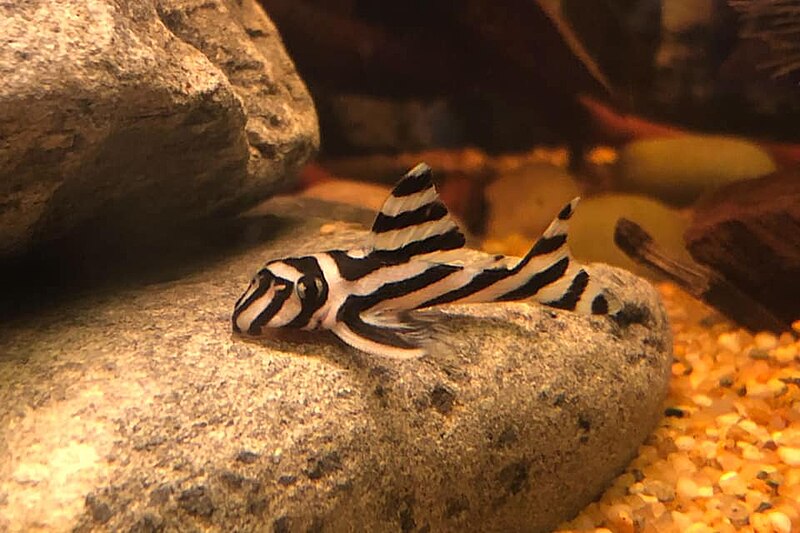
The zebra pleco is really stunning. As its name suggests, it is replete with black and white stripes, meaning that they will likely stand out from some of the other more colourful fish in your tank. They also tend to live for longer than many other freshwater tank fish, meaning that if you are looking for an enduring aquatic buddy, this may be one of your best picks.
That said, the zebra pleco doesn’t get on well with all fish it’s likely to come across, though it doesn’t always cause a scene. They are generally found in the waters of Brazil, but as mentioned, their habitat is under threat – meaning there’s not much chance you will see them out and about.
Therefore, it’s really important to look after your zebra pleco, just as you should be doing with all other pets! They are surprisingly simple to care for providing you have the right tank and food available, meaning that providing you are careful about who they swim with, you will have years of companionship to look forward to.
- Fish Lifespan: Up to 15 years
- Tank Size: 30 gallons at least
- Water Temperature: Between 79 F and 88 F ideally
- pH: Between 6.0 and 7.0
- Hardness: Between 3 and 12 dGH
- Compatibility: Work well with non-competitive, similar sized fish
- Fish Size: Up to 4 inches long
Freshwater African Butterfly Fish (Pantodon buchholzi)
These spiny-looking creatures are some of the coolest freshwater aquarium fish you can introduce into your tank. As their name suggests, you will normally expect to find these fish swimming around in the African creeks and rivers, though they tend to prefer some of the slower waters. Freshwater African butterfly fish traditionally eat insects and have even been known to feast on crustaceans, too. Naturally, we don’t expect you to keep up to the fancier side of their diet at home!

It is a fairly common fish on the whole, but that doesn’t stop it from being well sought-after. It’s famous for its speckled colouring, though these critters tend to be black or dark brown in complexion. As mentioned, these fish are carnivorous, which means you are going to need to be careful with their diet, as well as any other fish or creatures you place in the tank with them! However, as they are a common aquarium sight and have been a popular choice for many years, it’s very likely you will be able to find resources and support to help you nurture them.
As their name suggests, too, these fish have large fins which can resemble wings – hence the butterfly in their English name. They are great at gliding through water and are widely known as some of the best predator evaders on the planet. They are said to be the result of millions of years of fantastic evolution. Worth looking out for in your home tank, in that case!
These butterfly fish tend to appear fairly docile, though their hunting and feeding prowess means that they can suddenly spring to life with very little warning! This could well be stressful for other fish, so watch out!
- Fish Lifespan: Up to 6 years
- Tank Size: At least 40 gallons – needs to be long, as they love the surface
- Water Temperature: Between 75 and 86 F
- pH: Between 6.5 and 7
- Hardness: Between 5 and 20 dGH
- Compatibility: Can be aggressive, avoid with smaller fish
- Fish Size: Up to 5 inches
Finding the Perfect Fit
When looking for the coolest freshwater aquarium fish, you shouldn’t look at just the colors and pretty fins on offer. You should also make a point to consider behavior, their original habitat, and what they need from water, and a tank.
Too big or too small a tank could restrict growth or could cause all kinds of problems for your fish later down the line. Even freshwater fish, too, need close consideration when it comes to pairing up with other fish in terms of behavior. Some are very territorial, and of course, some may even hunt and eat smaller breeds and species.
Therefore, if it is your first time in looking for the coolest freshwater aquarium fish, always be ready to do a little research. This shouldn’t take too long, but the more perfect the setup is for your fish, the better the experience you will have – you and your freshwater buddies included – for the years to come.
Be sure to take a closer look at the fish we’ve introduced in this guide, and keep reading our other resources to learn more about the wildest and most interesting critters you could fill your own tank with in the years to come. Keeping freshwater fish can be a lot of fun – and just as colorful as saltwater keeping!

